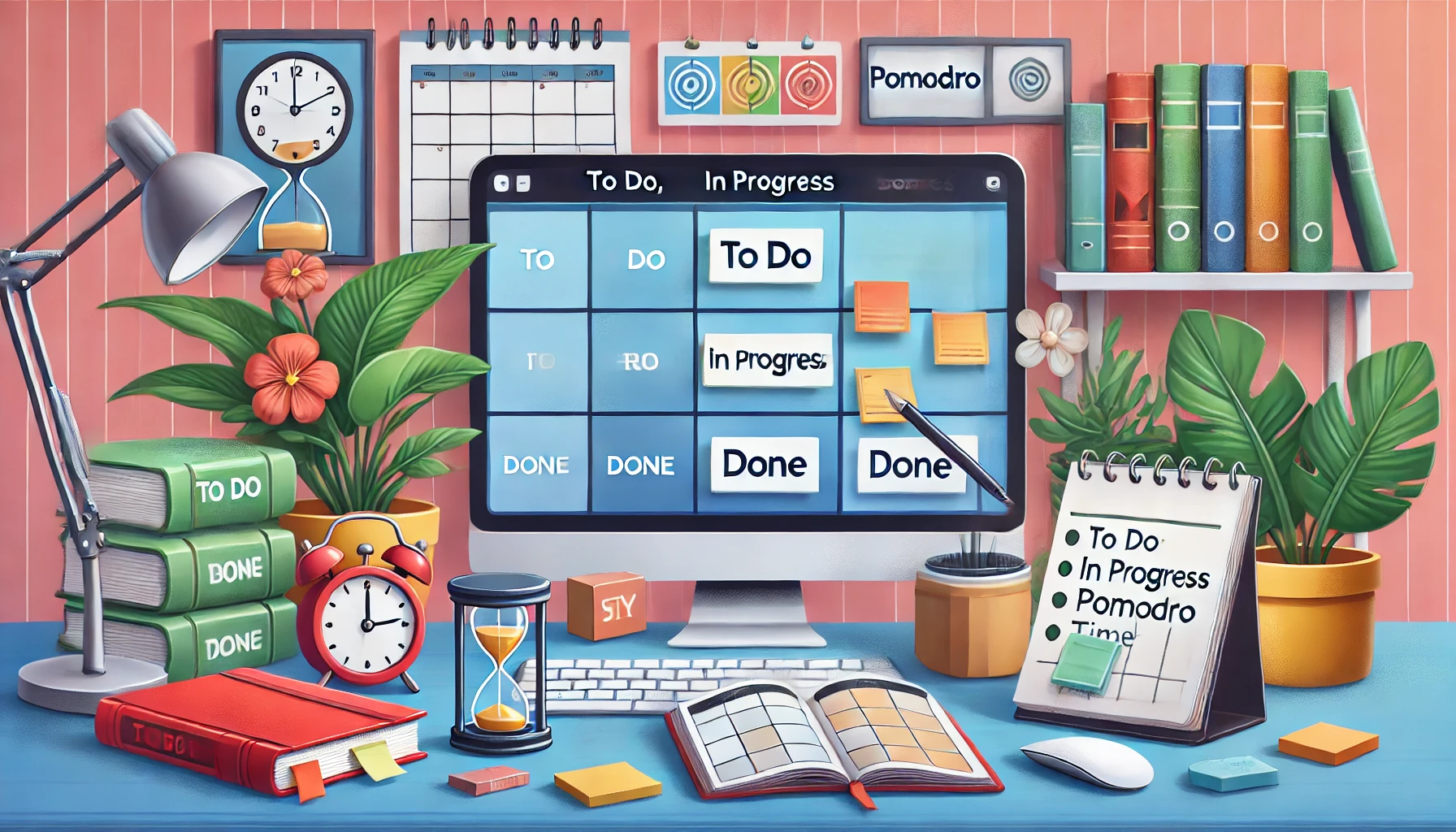In today’s fast-paced world, managing studies, work, and leisure can feel like an impossible balancing act. With constant demands from academics, professional responsibilities, and personal commitments, many struggle to find equilibrium without feeling overwhelmed. This is where Agile productivity strategies come into play. Originally developed for software development, Agile methodologies have proven to be highly effective in personal productivity by breaking tasks into manageable pieces, enhancing focus, and promoting adaptability. This article delves into how you can use Agile principles to create a balanced and efficient approach to managing your life.
What is Agile Productivity?
Agile is a methodology that emphasizes adaptability, collaboration, and continuous improvement. It was initially developed to streamline software development, but its principles are versatile enough to apply to personal productivity. At its core, Agile focuses on dividing tasks into small, manageable chunks, known as iterations or sprints, and prioritizing continuous feedback to refine processes.
When applied to personal productivity, Agile allows you to:
- Break down overwhelming projects into actionable steps.
- Visualize tasks and monitor progress.
- Adapt to changing priorities or unforeseen challenges.
- Reflect on your performance to improve efficiency.
Agile productivity encourages you to view your time as a resource and your goals as flexible objectives that can evolve with your needs.
Key Agile Strategies for Personal Productivity
1. Sprints: Working in Focused Time Blocks
Sprints are short, defined periods (e.g., one week or two weeks) during which you focus on completing specific tasks or goals. This approach helps you avoid procrastination by providing a clear timeline and manageable objectives.
- How to Use Sprints: Identify key tasks for the week and allocate dedicated time blocks to focus on them. For example, dedicate a two-week sprint to completing a major work presentation while allocating smaller time blocks to study sessions and leisure activities.
- Benefits: Sprints create urgency and help you prioritize tasks effectively.
2. Kanban Boards: Visualizing Your Workflow
A Kanban board is a visual tool that helps you organize tasks into columns such as “To Do,” “In Progress,” and “Done.” This visualization enhances clarity and enables you to track progress at a glance.
- How to Set Up a Kanban Board: Use physical sticky notes on a board or digital tools like Trello or Notion. Assign tasks to categories and move them as you progress.
- Benefits: Kanban boards reduce mental clutter and provide a sense of accomplishment when tasks are moved to the “Done” column.
3. Daily Stand-Ups: Reviewing Goals and Priorities
In Agile, daily stand-ups are short meetings where team members discuss their progress, challenges, and plans for the day. For personal productivity, you can conduct a brief “stand-up” with yourself each morning to set intentions and review priorities.
- How to Conduct a Stand-Up: Spend 5-10 minutes each morning asking: What did I achieve yesterday? What will I focus on today? Are there any obstacles?
- Benefits: This habit keeps you aligned with your goals and helps you identify potential roadblocks early.
4. Retrospectives: Reflecting and Improving
Retrospectives are structured reflections on what worked well and what didn’t during a sprint. This practice encourages continuous improvement by identifying areas for growth.
- How to Conduct a Retrospective: At the end of each week, review your progress and ask: What went well? What challenges did I face? What can I improve next week?
- Benefits: Retrospectives promote self-awareness and help you refine your strategies over time.
Tools to Implement Agile Productivity
Adopting Agile strategies is easier with the right tools. Here are some popular apps and platforms to help you get started:
- Trello: A user-friendly tool for creating Kanban boards and managing tasks visually.
- Notion: A versatile platform for organizing projects, creating to-do lists, and tracking progress.
- Todoist: A task management app with features like priority levels, deadlines, and reminders.
- Asana: Ideal for tracking larger projects and collaborating with others.
- Pomodoro Apps: Tools like Forest or Focus@Will can help you break work into focused intervals, aligning with sprint principles.
Real-Life Examples of Agile Productivity
Example 1: The University Student
Maria is a full-time student who also works part-time and enjoys painting in her free time. By adopting Agile strategies:
- She uses a Kanban board to track assignments, work shifts, and leisure activities.
- Weekly sprints help her allocate focused study sessions for exams while scheduling time for work and art.
- Retrospectives allow her to adjust her study techniques and prioritize effectively.
Example 2: The Remote Worker
James works remotely as a graphic designer and struggles with maintaining boundaries between work and personal life. By using Agile:
- He conducts daily stand-ups to set clear work goals and define “off-duty” hours.
- A Kanban board helps him balance client projects, skill development, and leisure.
- Weekly retrospectives help him improve time management and reduce burnout.
Benefits of Agile Productivity
Implementing Agile strategies in your life can lead to numerous benefits:
- Enhanced Focus: Breaking tasks into smaller pieces reduces overwhelm and increases focus.
- Improved Time Management: Sprints and Kanban boards help you prioritize and stay on track.
- Adaptability: Agile’s iterative nature allows you to adapt to changing circumstances.
- Reduced Burnout: By reflecting on progress and balancing responsibilities, you can avoid overloading yourself.
- Work-Life Balance: Agile helps you allocate time for both obligations and personal interests.
Conclusion
Agile productivity offers a powerful framework for managing the complexities of modern life. By incorporating strategies like sprints, Kanban boards, daily stand-ups, and retrospectives, you can enhance your ability to juggle studies, work, and leisure without feeling overwhelmed. With the right tools and a commitment to continuous improvement, you can create a balanced, efficient, and fulfilling lifestyle. Start applying Agile principles today and take control of your productivity journey!
